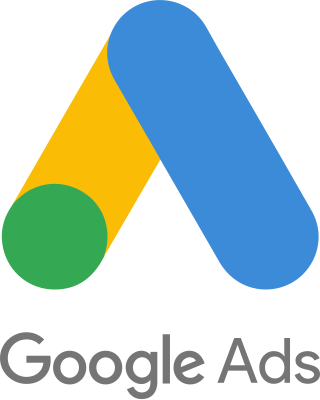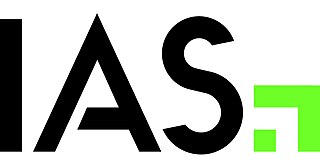Related Research Articles

A web banner or banner ad is a form of advertising on the World Wide Web delivered by an ad server. This form of online advertising entails embedding an advertisement into a web page. It is intended to attract traffic to a website by linking to the website of the advertiser. In many cases, banners are delivered by a central ad server. This payback system is often how the content provider is able to pay for the Internet access to supply the content in the first place. Usually though, advertisers use ad networks to serve their advertisements, resulting in a revshare system and higher quality ad placement.

robots.txt is the filename used for implementing the Robots Exclusion Protocol, a standard used by websites to indicate to visiting web crawlers and other web robots which portions of the website they are allowed to visit.
ZIP is an archive file format that supports lossless data compression. A ZIP file may contain one or more files or directories that may have been compressed. The ZIP file format permits a number of compression algorithms, though DEFLATE is the most common. This format was originally created in 1989 and was first implemented in PKWARE, Inc.'s PKZIP utility, as a replacement for the previous ARC compression format by Thom Henderson. The ZIP format was then quickly supported by many software utilities other than PKZIP. Microsoft has included built-in ZIP support in versions of Microsoft Windows since 1998 via the "Plus! 98" addon for Windows 98. Native support was added as of the year 2000 in Windows ME. Apple has included built-in ZIP support in Mac OS X 10.3 and later. Most free operating systems have built in support for ZIP in similar manners to Windows and macOS.

Digital display advertising is online graphic advertising through banners, text, images, video, and audio. The main purpose of digital display advertising is to post company ads on third-party websites. A display ad is usually interactive, which allows brands and advertisers to engage deeper with the users. A display ad can also be a companion ad for a non-clickable video ad.
Google AdSense is a program run by Google through which website publishers in the Google Network of content sites serve text, images, video, or interactive media advertisements that are targeted to the site content and audience. These advertisements are administered, sorted, and maintained by Google. They can generate revenue on either a per-click or per-impression basis. Google beta-tested a cost-per-action service, but discontinued it in October 2008 in favor of a DoubleClick offering. In Q1 2014, Google earned US$3.4 billion, or 22% of total revenue, through Google AdSense. AdSense is a participant in the AdChoices program, so AdSense ads typically include the triangle-shaped AdChoices icon. This program also operates on HTTP cookies. In 2021, over 38.3 million websites use AdSense.

Google Ads is an online advertising platform developed by Google, where advertisers bid to display brief advertisements, service offerings, product listings, and videos to web users. It can place ads in the results of search engines like Google Search, mobile apps, videos, and on non-search websites. Services are offered under a pay-per-click (PPC) pricing model.
Click fraud is a type of fraud that occurs on the Internet in pay per click (PPC) online advertising. In this type of advertising, the owners of websites that post the ads are paid based on how many site visitors click on the ads. Fraud occurs when a person, automated script, computer program or an auto clicker imitates a legitimate user of a web browser, clicking on such an ad without having an actual interest in the target of the ad's link in order to increase revenue. Click fraud is the subject of some controversy and increasing litigation due to the advertising networks being a key beneficiary of the fraud.
Pay-per-click (PPC) is an internet advertising model used to drive traffic to websites, in which an advertiser pays a publisher when the ad is clicked.
Online advertising, also known as online marketing, Internet advertising, digital advertising or web advertising, is a form of marketing and advertising that uses the Internet to promote products and services to audiences and platform users. Online advertising includes email marketing, search engine marketing (SEM), social media marketing, many types of display advertising, and mobile advertising. Advertisements are increasingly being delivered via automated software systems operating across multiple websites, media services and platforms, known as programmatic advertising.
The Interactive Advertising Bureau (IAB) is an American advertising business organization that develops industry standards, conducts research, and provides legal support for the online advertising industry. The organization represents many of the most prominent media outlets globally, but mostly in the United States, Canada and Europe.
Redis is a source-available, in-memory storage, used as a distributed, in-memory key–value database, cache and message broker, with optional durability. Because it holds all data in memory and because of its design, Redis offers low-latency reads and writes, making it particularly suitable for use cases that require a cache. Redis is the most popular NoSQL database, and one of the most popular databases overall. Redis is used in companies like Twitter, Airbnb, Tinder, Yahoo, Adobe, Hulu, Amazon and OpenAI.
In the online advertising industry, a viewable impression is a measure of whether a given advert was actually seen by a human being, as opposed to being out of view or served as the result of automated activity. The viewable impression guidelines are administered by the Media Rating Council and require that a minimum of 50% of the pixels in the advertisement were in an in-focus tab on the viewable space of the browser page for at least one continuous second.
BagIt is a set of hierarchical file system conventions designed to support disk-based storage and network transfer of arbitrary digital content. A "bag" consists of a "payload" and "tags," which are metadata files intended to document the storage and transfer of the bag. A required tag file contains a manifest listing every file in the payload together with its corresponding checksum. The name, BagIt, is inspired by the "enclose and deposit" method, sometimes referred to as "bag it and tag it."
WebRTC is a free and open-source project providing web browsers and mobile applications with real-time communication (RTC) via application programming interfaces (APIs). It allows audio and video communication and streaming to work inside web pages by allowing direct peer-to-peer communication, eliminating the need to install plugins or download native apps.
Kubernetes is an open-source container orchestration system for automating software deployment, scaling, and management. Originally designed by Google, the project is now maintained by a worldwide community of contributors, and the trademark is held by the Cloud Native Computing Foundation.
TubeMogul is an enterprise software company for brand advertising.
Learning Tools Interoperability (LTI) is an education technology specification developed by 1EdTech. It specifies a method for a learning system to invoke and to communicate with external systems. In the current version of the specification, v1.3, this is done using OAuth2, OpenID Connect, and JSON Web Tokens. For example, a Learning Management System (LMS) may use LTI to host course content and tools provided by external, third-party systems on a web site, without requiring a learner to log in separately on the external systems, with information about the learner and the learning context shared by the LMS with the external systems.

Integral Ad Science (IAS) is an American publicly traded technology company that analyzes the value of digital advertising placements. Integral Ad Science is known for addressing issues around fraud, viewability and brand risk, as well as TRAQ, a proprietary media quality score.
SensorThings API is an Open Geospatial Consortium (OGC) standard providing an open and unified framework to interconnect IoT sensing devices, data, and applications over the Web. It is an open standard addressing the syntactic interoperability and semantic interoperability of the Internet of Things. It complements the existing IoT networking protocols such CoAP, MQTT, HTTP, 6LowPAN. While the above-mentioned IoT networking protocols are addressing the ability for different IoT systems to exchange information, OGC SensorThings API is addressing the ability for different IoT systems to use and understand the exchanged information. As an OGC standard, SensorThings API also allows easy integration into existing Spatial Data Infrastructures or Geographic Information Systems.
Brand safety is a set of measures that aim to protect the image and reputation of brands from the negative or damaging influence of questionable or inappropriate content when advertising online.
References
- ↑ "State of ads.txt adoption". Ad Ops Insider. 16 September 2017. Archived from the original on 2018-03-21. Retrieved 2018-03-22.
- ↑ "The state of ads.txt". Digiday . Archived from the original on 2018-03-23. Retrieved 2018-03-22.
- ↑ "Ads.txt Industry Dashboard". FirstImpression.io. Retrieved 7 February 2019.
- ↑ "About ads.TXT/App-ads.TXT - Google Ad Manager Help".
- ↑ "Google announces new anti-fraud initiatives for DoubleClick Bid Manager". MarTechToday. 21 September 2017. Archived from the original on 2018-03-22. Retrieved 2018-03-22.
- 1 2 "IAB.Tech Lab ads.txt v1.1" (PDF). IABTechLab . Retrieved 2023-04-01.
- ↑ "IABTechLab ads.txt Resources". IABTechLab Resources. Archived from the original on 2018-07-11. Retrieved 2018-07-11.
- ↑ "3.2.1 FILES WITHOUT AUTHORIZED ADVERTISING SYSTEM RECORDS". IAB.Tech Lab ads.txt v1.1 (PDF). IABTechLab . Retrieved 2024-01-02.